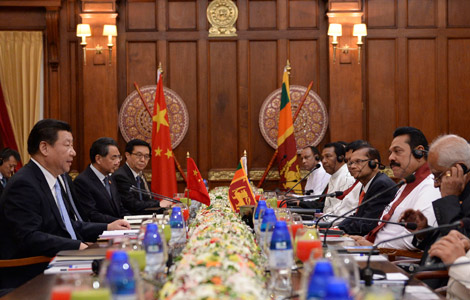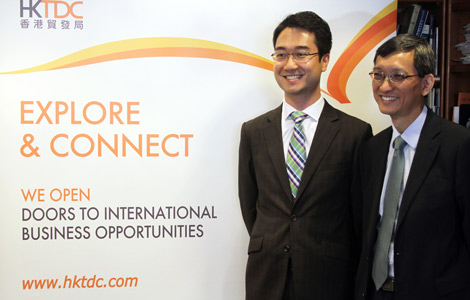New momentum over China-Singapore economic corridor
Updated: 2014-09-18 10:16
(Xinhua)
|
|||||||||
NANNING -- There is new momentum behind a proposed economic corridor between China and Singapore after mayors of cities along the route reached a consensus on the initiative at the ongoing meeting between China and the Association of Southeast Asian Nations (ASEAN).
Consensus on the logistical and industrial network was reached at the China-ASEAN Expo, which opened on Tuesday in Nanning of south China's Guangxi Zhuang Autonomous Region, one of the country's gateways to Southeast Asia.
The corridor will promote the "co-construction of the China-ASEAN Free Trade Area and the Maritime Silk Road" and be conducive to regional prosperity and beneficial to people along the route, according to a document issued after the mayors discussed the initiative on Wednesday.
The plan is for the corridor to start from the south China cities of Nanning and Kunming, running through the Indo-China Peninsula and linking countries including China, Vietnam, Laos, Cambodia, Thailand, Malaysia and Singapore with highways and railroads.
The idea has taken shape gradually since 2010, initially seen merely as a small program to help merchandise trading rather than a country-level operation. However, it has attracted interest from national leaders, who have begun to pin high hopes on the corridor to strengthen regional bonds and provide growth impetus during the global depression.
China and the ASEAN have become significant economic partners. Trade between China and members of the association amounted to $443.61 billion in 2013, nearly five times that of 2003.
Addressing the expo, Chinese Vice Premier Zhang Gaoli said the corridor will "facilitate the trans-regional and trans-national flow of various resources and factors of production."
Xu Ningning, executive president of the China-ASEAN business council, compared the corridor to the Eurasian Land Bridge, or the railways moving freight and passengers overland from Pacific seaports in east Russia and China to seaports in Europe.
Despite rapid trade growth, economic collaboration between the two sides still faces the bottleneck of poor infrastructure and a lack of capital, especially in Southeast Asian countries.
The mayors therefore vowed to improve transport and logistics infrastructure in the peninsula, strengthening the interconnection of highways, railways and airlines.
Once the corridor is completed, a rail and road network stretching thousands of kilometers will link south China with Singapore.


 Chinese companies in US urged to know employment law
Chinese companies in US urged to know employment law
 Get together in space: experts
Get together in space: experts
 FTA high on agenda of China, Sri Lanka
FTA high on agenda of China, Sri Lanka
 ZTE's ZMAX makes debut
ZTE's ZMAX makes debut
 China sells off US Treasuries, for 2nd month
China sells off US Treasuries, for 2nd month
 Ma touts tower of 'BABA' in HK
Ma touts tower of 'BABA' in HK Typhoon Kalmaegi lands in South China's Hainan province
Typhoon Kalmaegi lands in South China's Hainan province
 Top destinations in China for autumn photography
Top destinations in China for autumn photography
Most Viewed
Editor's Picks

|

|

|

|

|

|
Today's Top News
Baidu speeds up online commerce
Xi, Modi set formality aside, setting friendly tone for visit
Ma named 'Asia Game Changer of the Year'
FDI dips for 2nd straight month
SF airport launches bilingual website for Chinese tourists
iPhone 6 spawns Chinese satire
China to help Maldives build 1,500 homes
Improved quality 'key to growth', says Li
US Weekly

|

|








